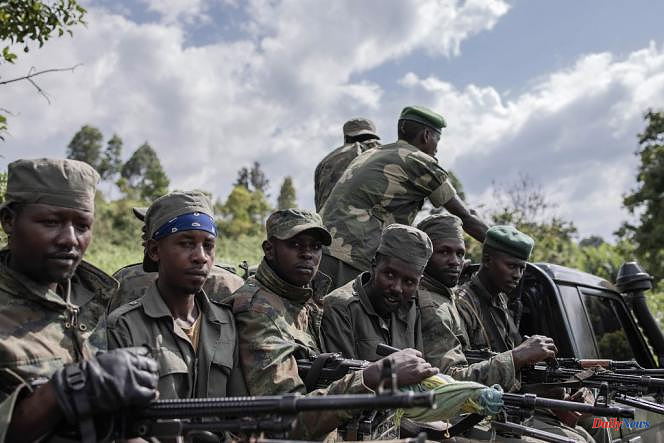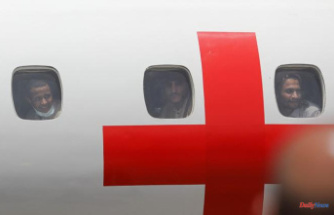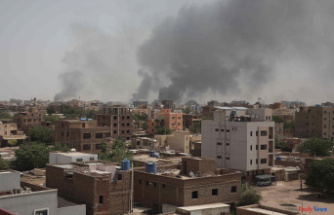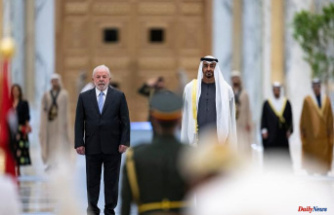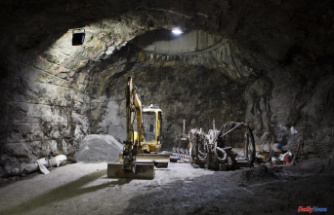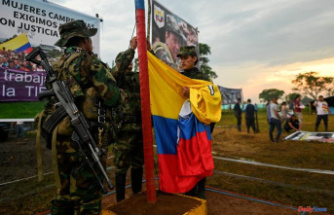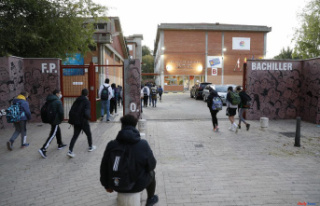Will sending Angolan soldiers to eastern Democratic Republic of Congo (DRC) be a step towards peace as attempts at a truce with the rebels of the March 23 Movement (M23) have so far all failed? Mediator mandated by the African Union (AU) to find a solution to the crisis which has pitted the M23 against the Congolese authorities since the end of 2021, Angolan President João Lourenço has decided to play this card.
Parliament approved on Friday, March 17, the creation of a 500-soldier unit which, according to details provided by the minister in charge of military security, General Francisco Furtado, will have the task of "supervising the disbandment, disarmament and the reintegration of the M23 rebels". The date of arrival of the Angolan troops has not yet been formalized.
On the ground, the cantonment demanded by Luanda and Kinshasa is indeed far from having begun. The rebels withdrew from a few localities in early March after their meeting with the Angolan president, but the truce, set for March 7 and negotiated directly by Luanda, was never respected. Clashes between the rebellion and the Congolese armed forces (FARDC) continue in the province of North Kivu, already scarred by nearly thirty years of war since the genocide of the Tutsi in 1994, in Rwanda.
Although Congolese Foreign Minister Christophe Lutundula has clarified that Angola "will not attack the M23", the objectives assigned to the Angolan unit are actually unclear. Locally, fears of seeing this new foreign force add to the confusion that already reigns in the face of the multiplication of external interventions have not been dispelled. To date, the exact number of foreign soldiers engaged in the various international, regional or bilateral military operations remains unknown. They would be more than fifteen thousand of sixty different nationalities, including those of the United Nations Stabilization Mission in the DRC (Monusco), which arrived in 1999.
Rwandan incursions
Among them, 900 Kenyans were deployed in the DRC as part of the East African force, created in Nairobi in the spring of 2022 during the summit of heads of state of the East African Community (EAC, according to the acronym English). They first took up positions in November in Goma, the regional capital, then, for some of them, near the city, in Kibumba and Rumangabo. The M23 agreed to release these two localities after the Luanda summit in November, organized on the initiative of the Angolan authorities and the former Kenyan president, Uhuru Kenyatta, facilitator of the EAC in the crisis linked to the M23.
On March 7, Burundian soldiers were also sent to the region of Saké, a strategic city at the gates of Goma, today almost surrounded by the rebels. Other South Sudanese and Ugandan contingents are also expected to complete the military posture of the East African force.
Like the future Angolan mission, the EAC troops have no intention of firing against the M23, supported, according to Kinshasa and the UN, by Rwanda, a country also a member of the African Community. from the east. Rwandan soldiers have been carrying out incursions into North Kivu, either alone or jointly with the rebels, for more than a year, according to the UN Group of Experts. However, the East African mandate is broader than that of Angola and aims "to impose peace on M23 and the hundred negative forces in eastern DRC", according to the words of the Kenyan force commander, General Jeff Nyagah, upon his November arrival at EAC headquarters in Goma. "If the groups do not want to lay down their arms, then we will prosecute them," he concluded.
" A boon "
So far, only the Burundian army has gone to the front against other armed groups in the DRC, mainly against the Burundi Liberation Forces (FNL) and the RED-Tabara, hostile to the power of Bujumbura. Officially under the aegis of the EAC, these operations nevertheless started in August 2022, four months before the installation of the East African command in the regional capital, in reality only continuing operations begun unofficially since the end of 2021 in South Kivu, with the tacit agreement of Kinshasa.
Another neighbour, Uganda, has embarked on a bilateral mission with Congolese soldiers to fight a Ugandan rebellion that has taken refuge in the DRC. By launching Operation "Shujaa" ("hero" in Swahili, one of the regional languages) in November 2021, the country aims to wipe out the Allied Democratic Forces (ADF). The Ugandan-born group has been affiliated with ISIS since 2019 and Kampala considers it a threat to its internal security.
One of its leaders was "neutralized" in late February, according to one of the mission's spokespersons, Colonel Mak Hazukay. But the ADF are still increasing attacks in the Beni region and "continue their geographical expansion in the DRC", noted in December the UN Group of Experts in the most recent report available.
"All these operations are and will always be ineffective insofar as the destabilization of eastern DRC remains a boon for our neighbors", analyzes Jackson Kitambala, of the Laïc de Concertation Committee (CLC), an association close to the influential National Episcopal Conference of Congo (Cenco). Since 1996, the natural resources of the DRC have been constantly plundered and the country destabilized by the incursions of certain countries of the Great Lakes, including Uganda, Burundi and Rwanda.
Monusco "useless"
On several occasions in recent months, Kinshasa has carried out reshuffles within its army, hoping for improvements on the ground. But the FARDC still fail to coordinate all the operations taking place on the ground and to restore peace with the help of these foreign soldiers. A setback that is pushing more and more Congolese to demand the departure of all external forces, including that of Monusco.
Violence on the sidelines of "anti-EAC" or "anti-Monusco" demonstrations has resulted in the death of around 40 people over the past year. The blue helmets, supposed to protect Congolese civilians, are today 14,000. By far the largest peacekeeping mission active in the country. "But she's useless!" Since his arrival, armed groups have continued to multiply,” laments Jimmy Nzaly, coordinator of the Positive Generation citizen movement.
The M23, dormant for ten years, reappeared at the end of 2021 despite the presence of blue helmets. Its resurgence further deteriorated their collaboration with the FARDC. Unlike 2013 when the rebels were defeated thanks to this cooperation, today UN soldiers and Congolese soldiers "no longer intervene side by side on the front in North Kivu", recognizes a diplomatic source.

